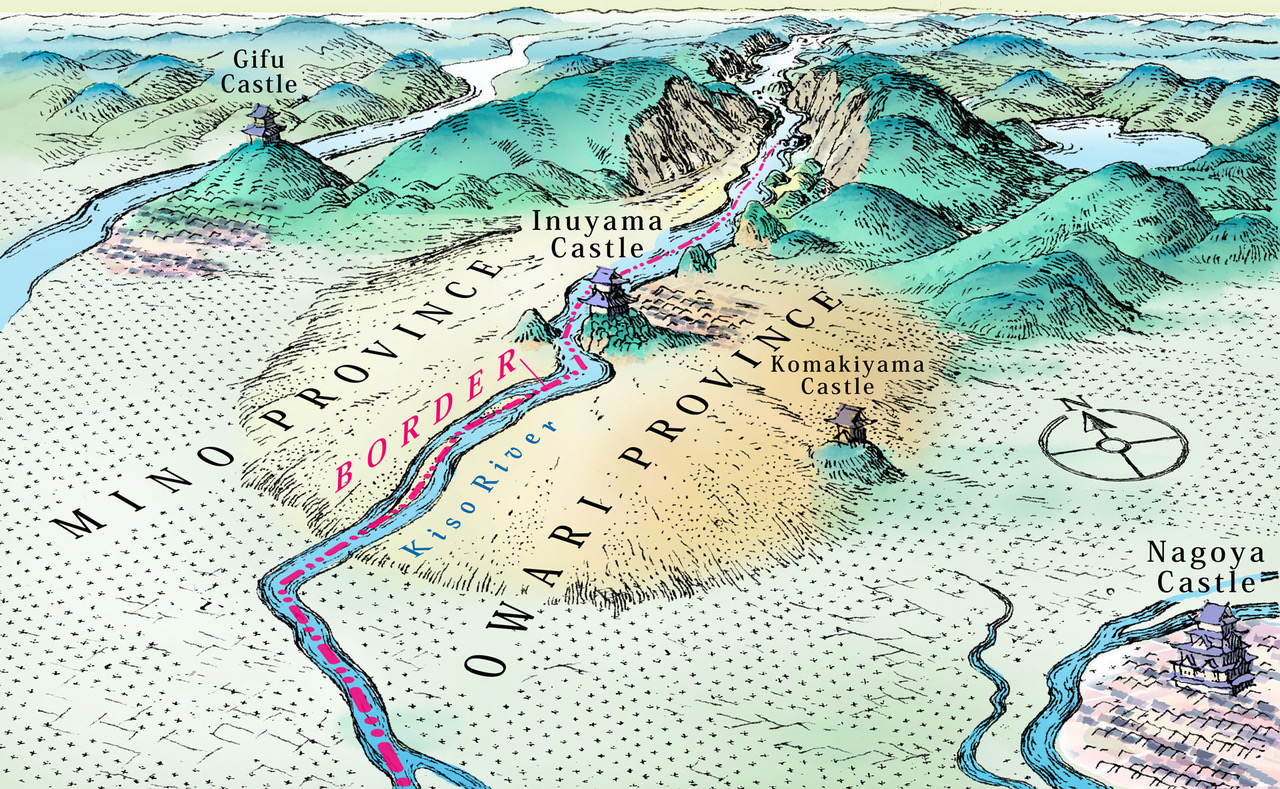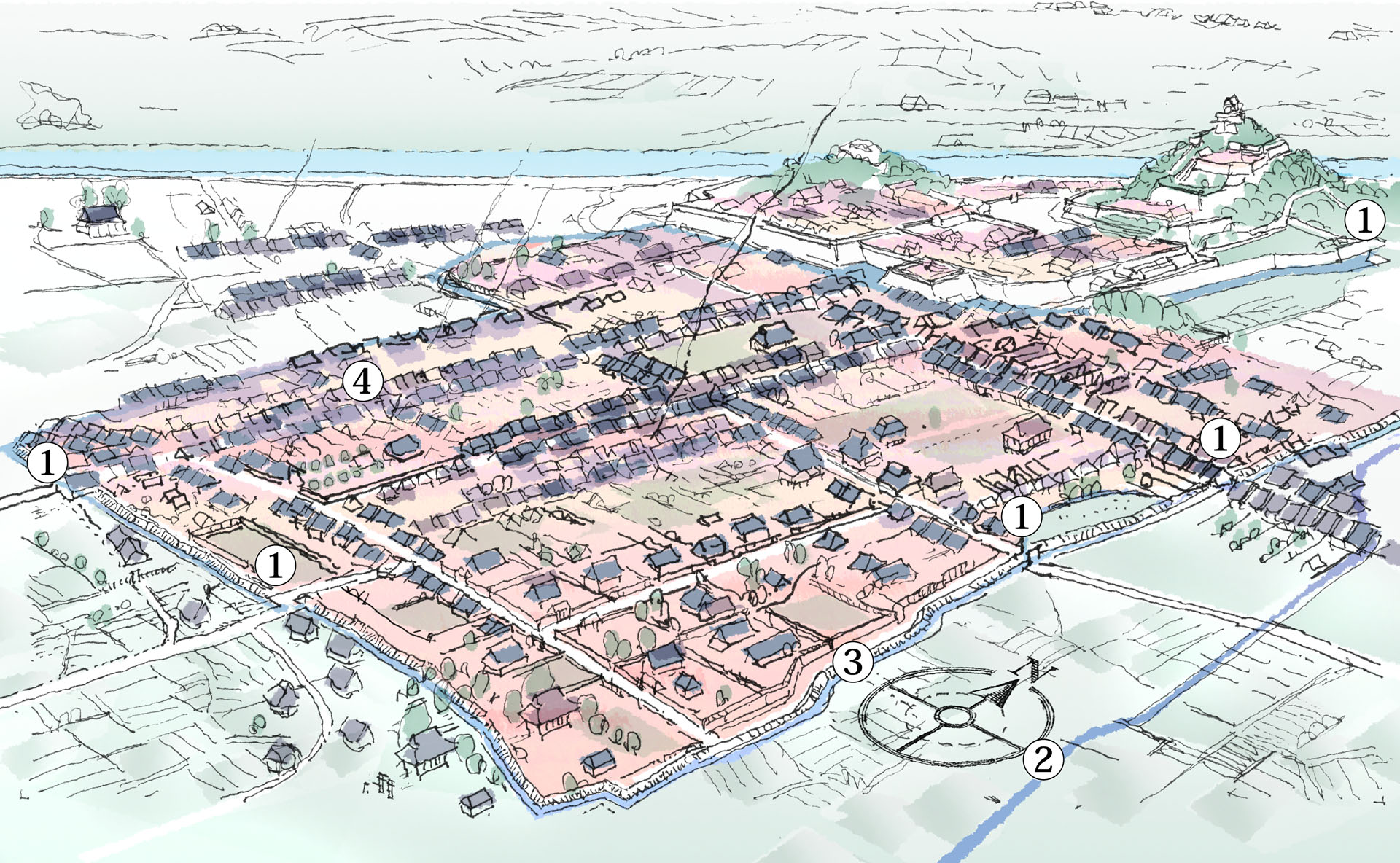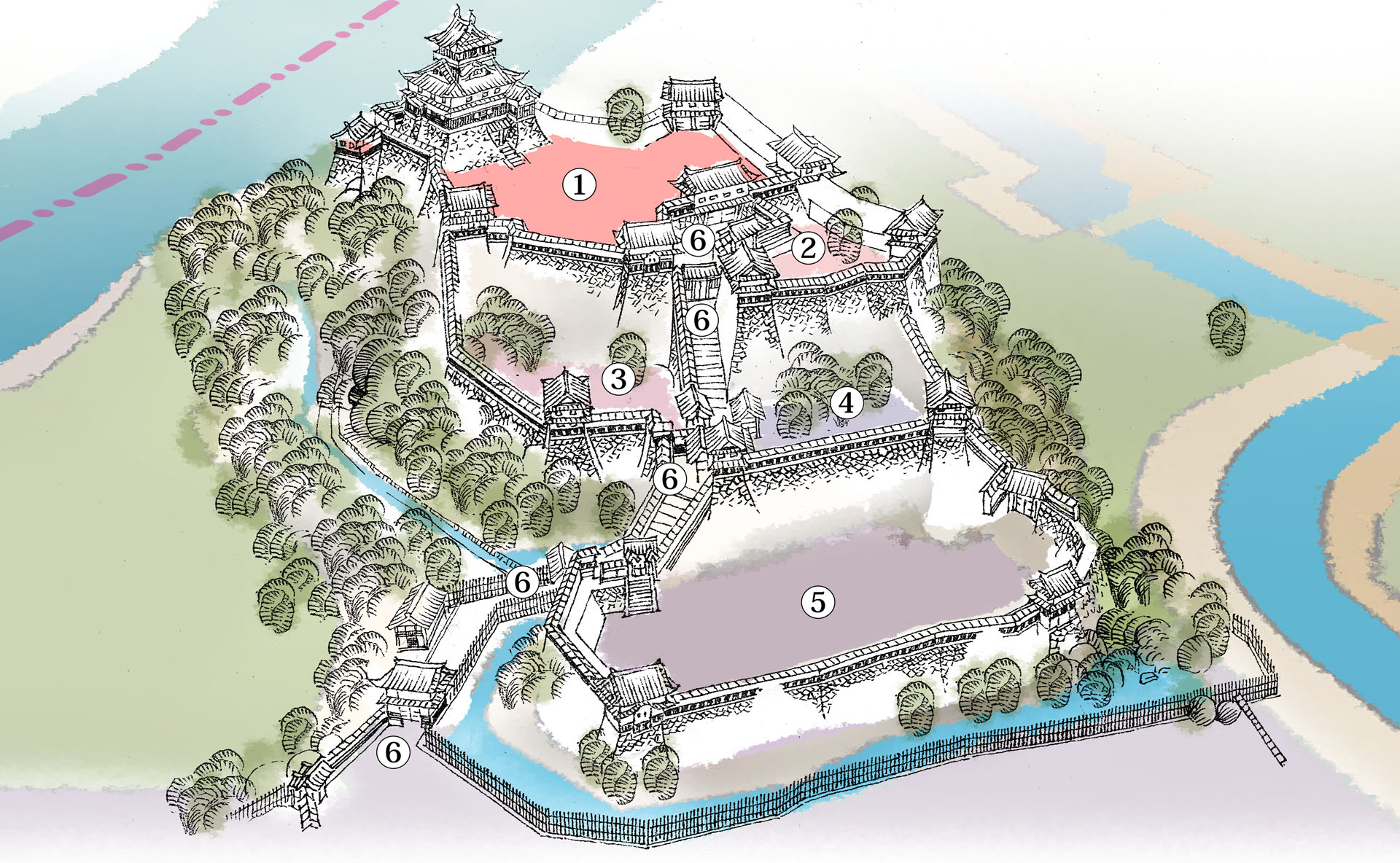Location and castle structure
Locations of Japanese castles were strictly chosen for optimal defense. Architects also used geology at their disposal and reinforced them while designing castle structures and architectures they worked for. How did they proceed?
Location

Inuyama Castle was constructed at the northernmost point of the Owari Province (western Aichi). This point is at the base of the alluvial fan shaped by the Kiso River. It is also the connecting point for the mountainlands upstream and plains downstream of Kiso River, and was seen as an important relay point for Kiso River wood-transportation. At the same time, Kiso River was at the border with the Mino Province (Gifu Prefecture), and Gifu Castle was built to the west-northwest and Nagoya Castle was built to the south. Therefore, Inuyama Castle was grounds for many battles due to its strategic importance. The castle is built on top of a hill (Shiroyama) at a precipice approximately 85 meters high, at the south of the Kiso River.
Castle structure

Exterior ramparts (Sogamae)
Inuyama Castle and its castle town were protected by structures called sogamae—moats and earthwork embankments that surround the area. The road was curved at the entrance ① to make intrusions difficult and easy to defend against. The street currently used to get to the castle from Inuyama Station ② cuts across the outer moat (Sotobori) ③ around the intersection right outside the station. The outer moat prevented enemies from coming in. The street then becomes a gradual slope, and leads to the main street of the castle town (Honmacho-dori) ④. The Honmachi-dori is situated at the highest level compared to the other streets in the area, is constructed on solid ground, and was part of the main road that connected Inuyama Castle and Nagoya Castle.

The citadel (Nawabari)
The surroundings of the castle were fortified by multiple flat areas, Kuruwa (walls), Maru (enclosures), Hori (moats), Dorui or Dote (earthen walls), Kirigishi (cliffs) made by shaving off the side of the Shiroyama, structures such as stone walls (Fushin), gates and fences, Yagura (watch towers), and donjons. This configuration is called Nawabari. Inuyama Castle, with its back (north side) protected by a cliff and Kiso River, is built longwise from north to south. To its east were Kirigishi and Mizubori, and to its west were Kirigishi, karabori, and dorui.
The Honmaru ① is at the top of the hill, and Kuruwa named Sugi-no-maru ②, Momi-no-maru ③, Kiri-no-maru ④, and Matsu-no-maru ⑤ are situated to its south in consecutive tiers. The Otemichi runs through the middle of the castle territory from the base of the mountain to the Honmaru, and is made to connect to each Kuruwa from the Otemichi. The Otemichi has five gates ⑥, and are situated in a way which makes going straight impossible. The exterior of each gate was surrounded by stone walls and dorui. This series of gates (Koguchi) is called Sotomasu-gata, and is said to provide strong protection.
